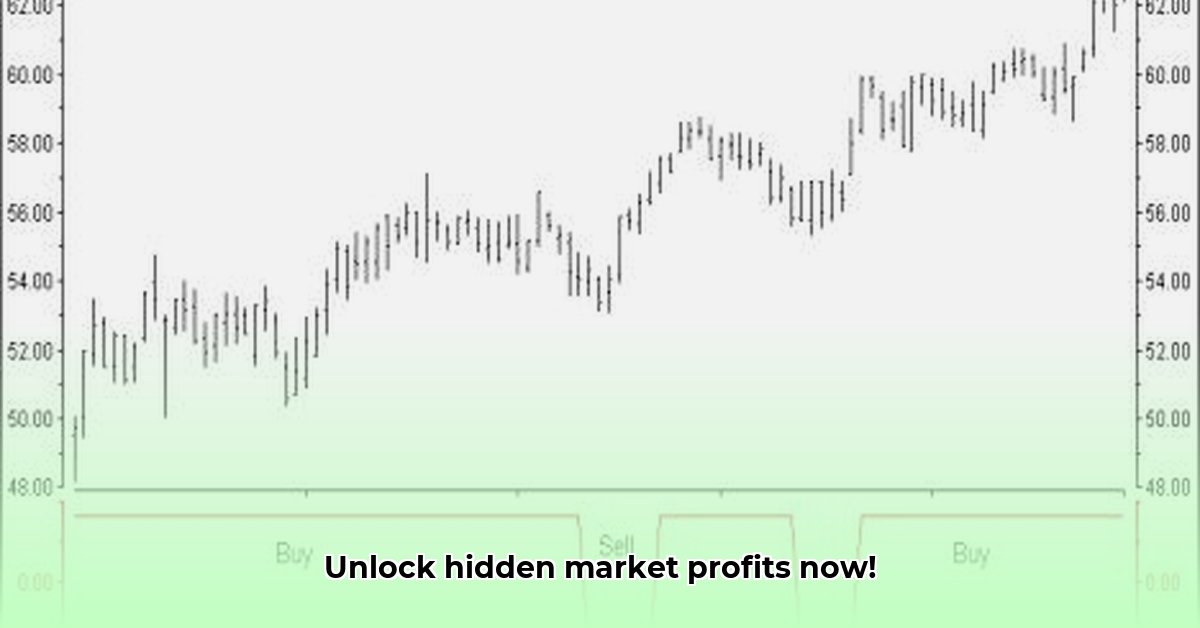
Market edge oscillators are powerful tools for traders and investors seeking to enhance their understanding of market momentum and timing. While not guaranteeing profits, these indicators, when used strategically within a broader trading plan, can significantly improve trading decisions. This guide will explore two popular oscillators: the S&P Oscillator and the Stochastic Oscillator, explaining their mechanisms, applications, and limitations. We will also emphasize the critical role of risk management in successful trading.
S&P Oscillator: Gauging Broad Market Momentum
The S&P Oscillator provides a concise overview of short-term market momentum, blending various moving averages and broad market indicators to assess the overall market sentiment. It acts as a "pulse check" on the market's energy levels. Primarily focused on short-term dynamics, it's not designed for long-term trend prediction. Its effectiveness stems from its integration of both price action and market participation, offering a holistic perspective. However, it's crucial to remember that the S&P Oscillator is not a predictive tool; it's most effective when used in conjunction with other indicators and a well-defined trading strategy.
Readings above a predefined threshold (typically +4.0) suggest an overbought market, potentially signaling an imminent price correction. Conversely, readings below a threshold (typically -4.0) indicate an oversold market, suggesting a potential price rebound. While readings exceeding +/- 10 are less frequent and represent extreme market conditions (overbought or oversold), interpreting these signals requires careful consideration of the prevailing market context. A signal in a strong uptrend will have a different interpretation than the same signal in a sideways market. Isn't it crucial to understand how market context alters oscillator interpretation?
Utilizing the S&P Oscillator:
- Daily Monitoring: Track daily fluctuations to identify trends and shifts in momentum.
- Contextual Analysis: Assess the oscillator's signals within the overall market trend (uptrend, downtrend, or sideways).
- Integrated Approach: Combine the S&P Oscillator with other technical indicators (e.g., moving averages, volume indicators) for more robust analysis.
- Prioritize Risk Management: Implement a comprehensive risk management plan, including stop-loss orders and portfolio diversification. What percentage of your capital should you risk on any single trade?
Stochastic Oscillators: Identifying Overbought and Oversold Conditions
Stochastic oscillators, particularly the Fast %K and Slow %K, pinpoint overbought and oversold market conditions by focusing on the speed of price changes within a defined timeframe. The Fast %K reacts rapidly, leading to higher volatility, while the Slow %K provides a smoother, potentially less erratic signal. Many traders favor the Slow %K to mitigate false signals.
These oscillators measure the price's position relative to its recent highs and lows. A reading above 80 generally suggests an overbought market and a potential price drop, while a reading below 20 indicates an oversold market, potentially signaling an upcoming price increase. Their effectiveness is most pronounced in sideways or ranging markets; their value diminishes in strongly trending markets (uptrends or downtrends).
Mastering Stochastic Oscillators:
- Dual Monitoring: Monitor both Fast %K and Slow %K lines for comprehensive analysis, taking note of crossovers and potential divergences.
- Context is Crucial: Interpret signals in the context of the broader market trend.
- Integrated Analysis: Integrate stochastic analysis with additional technical indicators (e.g., moving averages, RSI, volume) for enhanced confirmation.
- Rigorous Backtesting: Thoroughly backtest any trading strategy using historical data to assess its effectiveness and adjust parameters. How many years of data should you use for comprehensive backtesting?
S&P Oscillator vs. Stochastic Oscillators: A Comparative Analysis
| Feature | S&P Oscillator | Stochastic Oscillators |
|---|---|---|
| Time Horizon | Short-term | Short-term |
| Primary Focus | Broad market momentum and participation | Price momentum relative to recent highs/lows |
| Signal Generation | Overbought/oversold based on predefined levels | Overbought/oversold based on %K and %D percentage levels |
| Volatility | Relatively less volatile | Fast %K volatile; Slow %K less volatile |
| Best Application | Identifying short-term momentum shifts | Identifying overbought/oversold conditions, especially in range-bound markets |
Risk Management: A Cornerstone of Successful Trading
Regardless of the chosen oscillator, effective risk management is paramount. Employ stop-loss orders to limit potential losses. Diversify your investments across various assets to mitigate overall risk. Only invest capital that you can afford to lose. Does your risk management plan account for unexpected market events?
Conclusion: Harnessing the Power of Market Edge Oscillators
Market edge oscillators offer valuable insights into market momentum and timing, enhancing trading decisions when used strategically and responsibly. Understanding their strengths, weaknesses, and inherent limitations is crucial for successful application. Combining oscillators with other analytical tools, coupled with a robust risk management plan, maximizes the chances of success in the dynamic financial markets. Continuous learning and adaptation are vital for refining trading skills.